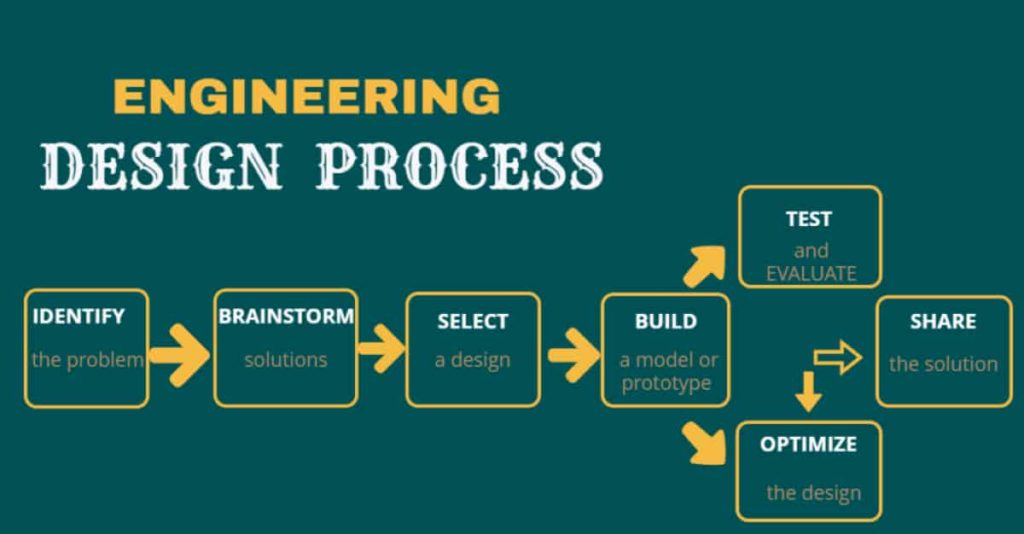The Industrial engineering design process is a series of steps that engineers follow to get a solution to a problem. If your project includes Site Analysis, site surveys, Pre-engineering, Designing, Detailed engineering, and procurement support, you should be following the Engineering Design Process for your industry infrastructure design.
Essential steps of the engineering design process
Identify the need & constraints of the projects
Engineers need to ask insightful questions to clients so that they can get a promising solution. Queries would be like
What is our project goal? What do we want to accomplish?
How to solve the anticipated problems?
What do we want to design?
Project requirements?
What are the battery limits?
Location analysis completed (Proximity to a residential area, proximity to other industries)?
Is the geotechnical survey report available? etc
Research the problem
The specialists have to assist the team when researching the problems and solutions that already exist.
Develop: Brainstorm solutions ( Possible solutions )
One of the most common barriers to excellent ideas is thinking too narrowly, leaving out the bigger picture. Setting specific boundaries is more effective when it comes to prompt creativity and innovation. Good Industrial designers try to generate as many solutions as they can before choosing one that they feel is the best. So, they may even use “wild and crazy” design ideas in the accepted design concept. Industrial Architects work with a team to brainstorm ideas and encourage out of box ideas.
Plan: Select a promising solution
For many Industrial Infrastructure designers, this is the hardest step. Revisiting the needs, constraints, and research from the earlier phases, compare their best ideas, select one best solution, and plan to move forward with it.
Usually, there are five phases for every Industry infrastructure design project. The designer considers each phase as an opportunity to develop the plan. So, this process is iterative, and numerous changes are made to come to the final design solution. The steps are often not demarcated and may often merge into one another.
Preliminary design
Conceptual design
Design approval
Detailed engineering
Procurement support
Every site, client, and project are unique, and so the services should be flexible. Therefore, designers should tailor it to suit the project needs. Some projects require selected services, while others may require a holistic industry infrastructure design; it’s all part of the client’s requirements.












